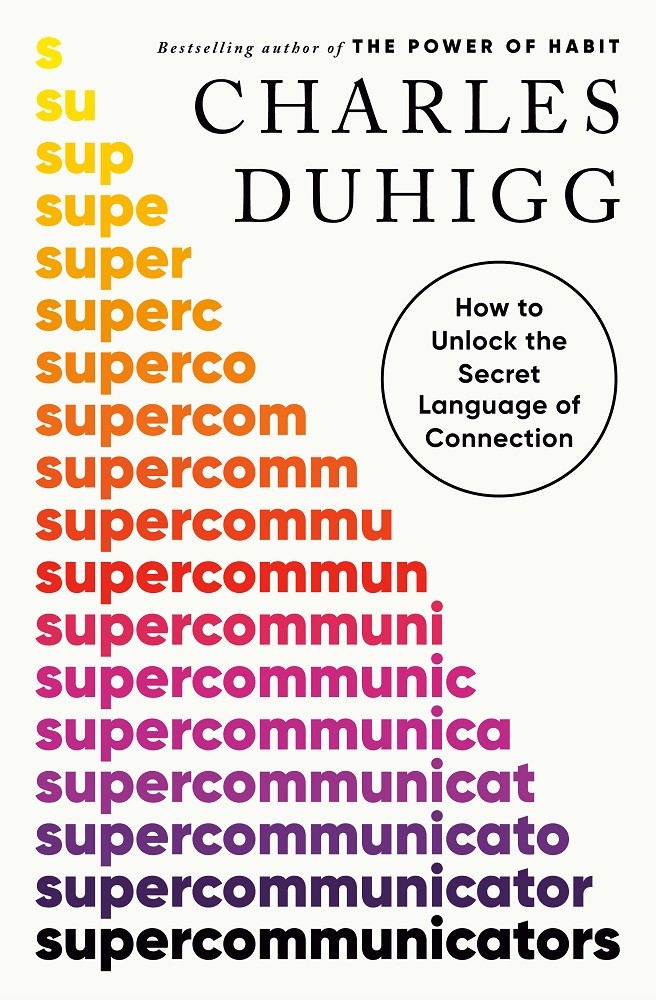The Esteemed Gentleman Articles
Become A Supercommunicator: Three Types Of Conversations You Need To Know
Charles Duhigg, author of Supercommunicators (2024), writes that all of our conversations can be broken down in to three main categories: practical, emotional, and social. These types of conversations help us connect with others, share ideas clearly, and build stronger relationships in both our personal and professional lives.
When we understand what kind of conversation, we are having with someone, we can better understand their needs and wants. Do they want advice or share ideas? Do they need to vent? Are they reaching out for connection?
Practical Conversations:
Practical conversations attempt to solve problems. They are straight-forward and to the point with a clear outcome or direction in mind. Think brainstorming, planning, list-making. They are not as emotional as the other two types of conversations mentioned in this article but they can turn emotional if someone's needs are not met or they feel ignored.
Examples of practical conversations include making a grocery list with your partner, planning a vacation, and assigning tasks to your team.
When having a practical conversation, it is important to be as clear as possible. Speak in a slower, controlled manner and articulate your words so they can be heard and processed without any confusion.
Emotional Conversations:
Emotional conversations focus on sharing feelings and emotions. The goal of an emotional conversation is to seek understanding, not solve problems. Listening attentively and seeking empathy are the most effective ways to have an emotional conversation with someone.
Validation and understanding increases connection. "I understand you feel this way" lets the other person know that you are on their side without any judgement or criticism. Asking "How does that make you feel?" or "thank you for sharing your thoughts with me" helps people feel safe opening up and discussing their emotions. This leads to better understanding for both the person talking and the person listening.
Examples of emotional conversations include venting about a tough day at work, discussing relationship goals with your partner, talking about goals and aspirations, and sharing personal insights with someone you admire. Reflecting on childhood memories and past events that have shaped you are also considered emotional conversations.
Social Conversations:
Social conversations are ones that revolve around identity. Engaging in social conversations help us connect with others and build relationships. These conversations revolve around topics like shared interests, childhood memories, hobbies and passions, and life experiences.
Bonding over a love for the same sports team, a similar taste in music or even growing up in the same city are common social conversations people have. We are attracted to others when they have the same view or stance as we do on things we value.
6 Tips On How To Have Better Conversations
Being a better conversationalist takes practice. If you do not believe you are good at conversations start small. Practice with friends and family or strike up a small conversation with a co-worker.
A Proper Introduction Goes A Long Way
When greeting people, be sure to lead with a firm handshake (but not too firm, you don't want to break their hands). This establishes trust and sincerity, making conversations and connection easier.
If you have never met this person before, introduce yourself. In business settings, you can add your job title or who you work for. In personal settings, like at a party, add a brief personal detail like how you know the host. Some people feel the need to boast about who they are, this can make the other person feel uncomfortable, so keep greetings short and simple.
Practice Good Manners, Always
Saying "please" and "thank you" shows respect and consideration. Sprinkle them in your conversations. Using open body language like making eye contact and facing the person you are conversing with builds trust.
Small compliments like "it's great to see you again!" can go a long way and help re-establish connection, especially if you haven't seen that person in a long time.
Learn The Conversation Style
When someone speaks to you, try to determine what type of conversation they want to have. This will help you connect with them and they will feel validated and heard.
Are they upset or angry? Smiling from ear to ear? Is the tone of their voice low or high? They likely want to have an emotional conversation.
Are they coming to you asking for advice or instructions? Do they seek expertise in something you are knowledgeable in? Practical conversation.
Is it Friday morning and a co-worker is asking about your weekend plans or if you watched the football game last night? Social conversation.
Asking "Do you want advice or just want me to listen?" can help determine the type of conversation the other person wants to have although it may not always be clear. Look for visual cues like body language, their tone of voice, and subject matter to help guide you.
Match The Conversation Style
For effective communication pay attention to their emotion, tone of voice and body language. For example: if someone is excited to share positive information, like a story from their recent trip to Japan, reflect that energy back to them by smiling and saying something like "That is great! Tell me more!" Charles Duhigg calls this "the matching principle".
Using the example in the previous paragraph, we know this conversation will likely be an emotional conversation, but it could also be social. We need to build off of what the person is saying by asking open ended questions and letting them drive the conversation where they want to go.
When we let the other person drive the conversation, it allows them to talk freely without fear of being judged or interrogated. If the person in this example asks you "Have you ever been to Japan?" answer honestly, but resist the urge to add any negativity to the conversation, even if your trip there was miserable. Turning a positive conversation into a negative one can change the dynamic of a conversation, resulting in arguments or failure to connect.
Ask Open-Ended Questions
Open-ended questions are questions that start with "what", "how", "can", and "tell me about". These types of questions encourage answers beyond just a "yes" or a "no". They allow the person answering to dive deeper into subject matter, providing insight and opinions you may not have known otherwise.
Keep open-ended questions short and sprinkled in the conversation. Too many in quick succession can make the other person feel like they are being interrogated. Give the person answering space by remaining silent until they finish speaking. Show genuine interest in what they are saying by avoiding distractions like phubbing them or aimlessly looking around the room.
When asking open-ended questions, avoid adding your own opinions or emotions into the question. An example of this would be "Wow, [insert local sports team you dislike] really sucks, am I right?" This could offend them if they are a fan of that team. Instead, frame the question like "I heard you are a fan of [sport], what team do you cheer for?" Once they answer, you can guide the conversation with follow-up questions like "What made you become a fan?" or "Tell me about your favourite player."
Loop Conversations For Better Understanding
Looping for understanding is a conversational technique where the listener summarizes, in their own words, what the speaker said then asks for confirmation. This is beneficial in conversations that contain important information like names, dates, and locations. It also gives the speaker an opportunity to correct themselves if they misspoke.
Repeating back what the speaker said shows them that you are listening attentively. This builds trust, reduces misinterpretation, and can help sympathize with them if they are sharing an emotional story.
Summary
Understanding and implementing these three types of conversations will greatly increase your ability to connect with others. Not only will other people feel more comfortable around you, it will also help build your rapport and trust, leading to stronger relationships, better understanding, and less concern about miscommunication.
When you subscribe to the article, we will send you an e-mail when there are new updates on the site so you wouldn't miss them.











Comments